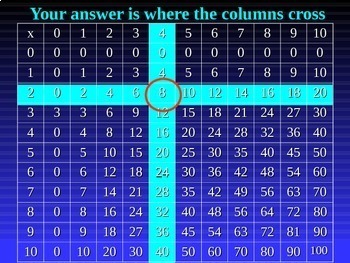
How many apples in \(7\) bags?Īns: Given, the number of apples in a bag \( = 6\). Tables of \(1\) to \(20\) are the multiples of the numbers \(1,\). It is a table that contains the first \(10\) multiples of numbers. Scroll down to get multiplication tables from 1 to 20. Students can refer to this article for solving problems quickly until they memorise the tables. You will find multiplication charts and tables to help you learn multiplication tables effortlessly and improve your understanding of these mathematical concepts. In this article, we will learn about multiplication tables from \(1\) to \(20\). Students need to remember multiplication tables of digits atleast up to 10 in order to score well in their school exams. So, it is necessary for each student to learn the tables for easy and quick calculations. Using 14 times table, we have: 14 times 2 minus 6 = 14 × 3 – 5 = 42-5= 37Įxpressing the given question mathematically we haveĤ.The concept of Multiplication Tables is the basics or fundamentals of learning Mathematics. Using Table of 14, Find the value of 14 times 3 minus 5?įirst, we will write 14 times 3 minus 5 mathematically.

So, to find the total number of candies, we will determine the fifth multiple of 14.Ģ. The number of candies that Cherry wants to distribute to each friend = 5 If he has 14 friends in her school, using the table of 14 find how many candies would he need for distribution? Today is Cherry’s birthday and he wants to distribute 5 candies each to his friends.


PATTERN TIMES TABLES MULTIPLICATION FOR FREE
Use our Printable Multiplication Table of 14 for free and try to learn it easily. Learning the Multiplication Table of Fourteen can be a big savior to solve more problems when you have a limited amount of time. It is advisable to memorize the 14 Times Table so that you can solve mental maths problems easily. In this article, we have listed the Multiplication Table of 14 from numbers 1 to 20, along with some tips and tricks to memorize the 14 Times Table Chart easily. Master the Multiplication Table of Fourteen at tongue and solve mental math problems in no time. Knowing about the Math Tables is quite essential while learning Mathematics. However, Multiplication Table is introduced to let students know about the Multiplication Operation. Learning and Memorizing the 14 Times Table can be a brilliant brain training exercise for Preschoolers.


 0 kommentar(er)
0 kommentar(er)
